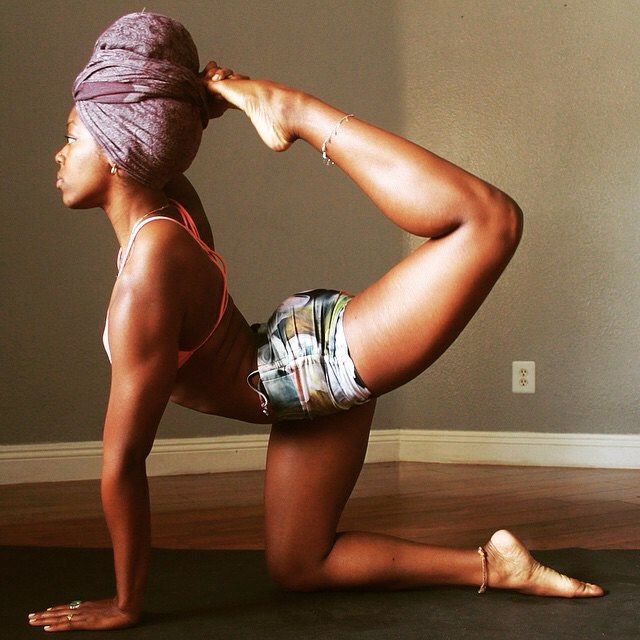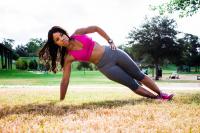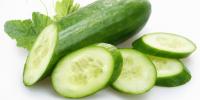
» HOME » MEDICINE » YOGA »
Alternative Medicine: Yoga
BY KENNETH BURNS | YOGA | UNRATED
As far back as the third century B.C., Patanjali, the father of classical yoga philosophy, defined yoga "as the cessation of the modification of the mind." Yoga, which in Sanskrit which means "union," focuses on altering the state of a person's mind, and using the powers of the mind to generate healing within the body. Through assuming a series of asanas (positions), and concentrating on breathing, people who practice yoga keep their spine supple and systematically exercise all of the body's major muscle groups. This in turn strengthens the organs by increasing respiration and blood flow.
The importance of breathing is central to all yogic teachings because the breath is considered to be the vehicle of "prana," or the vital life force. Prana enters the body when we inhale. How we breathe-whether shallow or deep, hurried or slow-controls how prana influences the body and mind. Indian yogis have long taught that to control the breath means to control universal energy within, or to control the physical health and state of mind. According to Swami Rama, one of the most influential figures to demonstrate the authenticity of yoga to western medicine, and reported by Tom Monte in World Medicine: The East West Guide to Healing Your Body, "All breathing exercises-advanced or basic-enable the student to control his mind through understanding prana."
A study in the April 1992 Indian Journal of Physiology and Pharmacology summarized by Dr. M. Satyanarayana suggests that Santhi kriya yoga, combining yogic breathing and relaxation, effectively helps reduce bodyweight, increase alpha activity of the brain, lower respiration rates, and increase a sense of "calmness" in eight healthy male volunteers aged 25-39. Another variant of yoga, Sahaja yoga, effectively reduces stress and blood lactate levels, according to Panjwani's article in the Journal of Physiology and Pharmacology. In his study, 32 Indian patients with epilepsy reduced periodic seizures by decreasing stress and blood lactate levels using yoga breathing.
A small study of five patients with obsessive compulsive disorder (OCD), reported by L. Beckett in the March 1996 Journal of Neuroscience, found that yogic breathing reduced their symptoms by 83%, 79%, 65%, 61%, and 18%. Three patients stopped medication after seven months or less, and two significantly reduced it, one by 25% and the other by 50%.
An article by Dr. P. Raju in the August 1994 Indian Journal of Medical Research showed that yogic breathing decreases
 Order Book
Order Bookblood lactate levels, often associated with stress-related disorders, and helps patients breathe more efficiently. Subjects in Raju's study who practiced pranayama achieved "higher work rates with reduced oxygen consumption per unit work and without increases in blood lactate levels."
S. Telles' article in the April 1994 Indian Journal of Physiology and Pharmacology suggests that yogic breathing, using alternate nostrils "can have a marked activating effect or relaxing effect on the sympathetic nervous system." Forty-eight male subjects ranging in age from 25-48 were randomly assigned to three groups: the first group practiced right nostril pranayama breathing, the second group practiced left nostril breath, and the third alternate nostril breathing. The alternate pranayama group showed an 18% increase in oxygen consumption, the right nostril group 37%, and the left nostril group 24%.
An increasing number of traditional medical doctors, chiropractors, back specialists, and physical therapists recommend yoga physical exercises such as stretching to their patients both as a preventive and remedial measure for the spine and as a stress-reduction technique. Many athletes have found that yoga is an excellent adjunct to their training because it tones, stretches, and relaxes muscles and ligaments, which in turn improves their range of motion and helps prevent injury.
Yoga relaxation exercises have been useful in Czechoslovakia in psychiatric treatment, especially for low self-esteem, social skills training, impulse control, and group and family therapy, according to an article by K. Nespor in the June 1994 Cezheslovania Psychiatry. Nespor adds that yoga has been used effectively to treat alcoholism, psychosomatic disorders and some neuroses. In the May 1994 Journal of Biometerology, S. Rawal suggests that yoga can be used to treat thyroid disorders. His study found that 10 male subjects with thyroid disorders used hatha yoga exercise effectively to increase thyroidal activity.
Like TM, yoga directly lowers heart rates, blood pressure levels, cortisol and prolactin levels, and increases growth hormone levels. Several studies reviewed by the OAM, and Fugh-Berman, suggest that on personality inventories, people who regularly practice yoga showed markedly higher scores in life satisfaction and lower scores in excitability, aggression, openness, emotionality, and somatic complaints.
Several studies also demonstrate that yogic exercises significantly improve young children's ability to focus and perform on mental and motor skill tests. S. Telles reports one study in the April 1994 Indian Journal of Physiology and Pharmacology of 20 subjects ranging from 17-22 years of age who practiced asanas'(physical postures), pranayama (voluntary regulation of breathing), meditation, devotional exercises, and tratakas (visual focusing exercises). These subjects showed fewer errors on mental tests.
Watch Video




